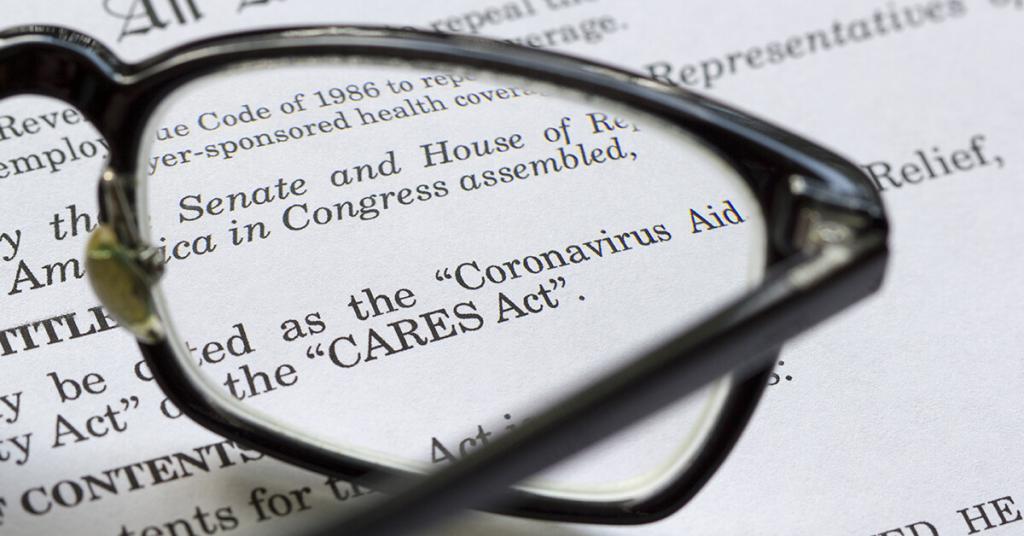After months of countless negotiations in D.C., Congress finally, and overwhelmingly, approved the $900B+ pandemic relief package and President Trump signed the bill in late December, which combined coronavirus-related funds with financial relief for individuals and businesses. The new relief package serves as a de facto “Round 2” of the CARES Act to help raise the level of U.S. economic activity and restore full employment. Although the economy started to recover in 2H-2020, certain sectors and population groups were disproportionately impacted by the pandemic and desperately need this relief.
Paycheck Protection Program – Accommodations and Foodservice Industries 1, 2
The Paycheck Protection Program (“PPP”) originally established in the CARES Act was extended and revised as part of the current bill. First-time qualified borrowers as well as businesses that previously received a loan can apply for PPP to cover payroll rent, mortgage interest, and utilities, although certain PPP features vary by sector.
Importantly, the bill specifically addresses the Food & Beverage sector, an industry that was devastated by the pandemic in 2020. Accommodations and Foodservice operators, which is comprised of establishments that provide customers with lodging and/or prepared meals, snacks and beverages for immediate consumption,3 will benefit from more flexible eligibility requirements in the latest relief package, including:
- Employees: businesses with 300 or fewer employees per location (compared to other businesses that must have 300 or fewer employees in total)
- Loan amount: up to 3.5x the average monthly payroll costs registered during the one year prior to the loan, or prior calendar year (compared to up to 2.5x for businesses in other sectors) with a maximum of $2M in all cases
All companies, regardless of sector, will still need to show that gross revenue declined at least 25% in any 2020 quarter compared to the same quarter in 2019 and must have used or will use the full amount of their first PPP loan.
Nutrition and Agriculture Relief 4, 5
The relief package also provides funding for several key programs:
- SNAP: the monthly Supplemental Nutrition Assistance Program (“SNAP”, formerly and still commonly known as the Food Stamp Program) benefits will increase 15% for six months; pandemic unemployment benefits are excluded toward household income for SNAP
- TEFAP: $400M to The Emergency Food Assistance Program, one of the largest sources of food for food banks (through September 2021)
- CSFP: an additional $13M to the Commodity Supplemental Food Program, which aids individuals known to be at risk of malnutrition due to low income or health conditions
- USDA & WIC: the U.S. Department of Agriculture is required to establish a task force on food delivery models for participants in the Special Supplemental Nutrition Program for Women, Infants, and Children (provides federal grants to states for supplemental foods, health care referrals, and nutrition education for low-income pregnant, breastfeeding, and non-breastfeeding postpartum women, and to infants and children up to age five who are found to be at nutritional risk) so they have access to curbside pick-up and other safe purchasing methods during the pandemic
- Agriculture: ~$11B to support agricultural producers, growers, and processors, including:
- Payments to livestock/poultry growers for losses suffered due to insufficient processing access or contract changes related to COVID-19
- $1.5B to purchase food and agricultural products and provide loans and grants to small and midsize food processors or distributors
- Payments to producers of advanced biofuel, biomass-based diesel, cellulosic or conventional biofuels, or other renewable fuels due to COVID-19 market losses
- Dairy, livestock, and farm stress: $400M to pay for milk to be processed into dairy products and donated to non-profit entities and (ii) $60M for facility upgrade and planning grants to meat and poultry processors to transition to federal inspection
These relief packages have certainly created a long-term fiscal problem for the U.S. The 2020 deficit increased to $3.1B, more than 3x the Congressional Budget Office’s (“CBO”) projected deficit pre-COVID and the debt-to-GDP ratio increased to 98% vs. CBO’s pre-COVID projection of 81%. However, the policy interventions have and should continue to provide immediate help to businesses and individuals. Ultimately, a strong economic recovery combined with the current low interest rate environment will help lessen the blunt of the fiscal challenges the U.S. will face in the coming years.
1 Food Business News.
2 Journal of Accountancy.
3 NAICS codes starting with 72.
4 Foley & Lardner.
5 Food Business News.

